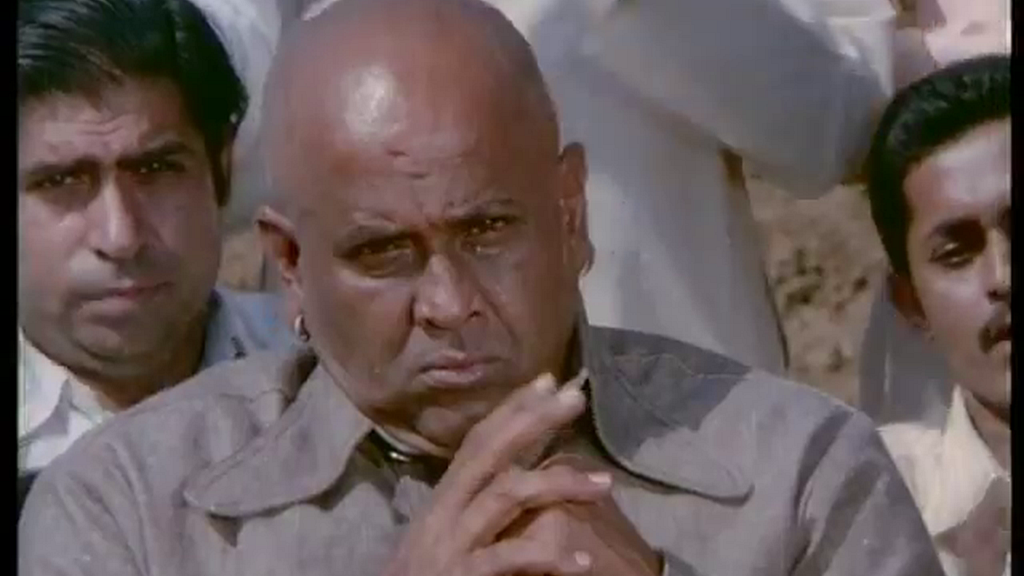In a world of suave villains, Shetty stands apart
From working in a Dhaba to a waiter in a canteen, Muddu Babu alias Shetty worked hard to establish himself as a formidable villain of Hindi films

When he appeared on screen, people shuddered. He had a strong body, cold eyes and a serious expression on his face. This is the image that runs through the mind when we remember Shetty. He was popular as ‘Ganja Shetty’ (bald Shetty). A fight scene sans Shetty was not complete in those days of 1970’s. But Shetty worked far more behind the screen than he ever did on screen. He was the busiest and most successful fight and stunt director of his time. He contributed in some way or the other to 700 films in 25 years which is a record in itself. During this time, Shetty fractured his bones more than 40 times during the filming of stunt scenes of various films.
Born in Mangalore near Mysore, Muddu Babu Shetty did not like studies at all. But the main concern of his father, who was a poor farmer, was that Shetty should earn some money so that the family could get some financial relief. One day, his father sent the nine-year-old Shetty to Mumbai with an uncle. He was confident that Muddu would find some work in the city. It was 1947. After a while, Muddu got a job of washing utensils in a Punjabi Dhaba situated on Lamington Road.
At the age of 16, Muddu Babu got the job of a waiter in the canteen of Tata Oil Mill in Sewri. His salary was 12 rupees a month. In the evenings, the workers of Tata Oil Mill used to do boxing. Muddu Babu also started to learn boxing. The manager of the canteen used to admire Muddu’s behaviour and agility in the ring. He encouraged Muddu to box. After some time, Muddu Babu won the boxing championship of Tata Oil Mill. The very next year, he won the Mumbai boxing championship as well. Now, his salary was ₹75 a month. His father was happy and relieved to know that Muddu was making progress in his life.
One day, actor and stuntman Baburao Pahelwan and actor, director and producer Bhagwan came to see the boxing championship match. Babu Rao was so impressed with Muddu’s performance that he offered him work in films. The next day, Muddu reached Jagriti Studios where a fight scene between Muddu Babu and Babu Rao Pahelwan was shot. For this job, Muddu received ₹200. He could not believe his fortune. And it was at that time that Muddu decided to work for films. He made Azim Bhai his teacher who was a great stunt director of that time. He learnt horse riding and fencing under Azim Bhai’s guidance. He started using the name Shetty for himself. During this time, he also continued taking part in boxing matches and remained Mumbai’s champion for eight long years.
In the 1950’s, he worked as a dummy for many heroes in fight scenes. In 1955, he got the opportunity to work as stunt director for the film ‘Munimji’. In the same year, he appeared on screen in ‘Tatar Ka Chor’. ‘Tumsa Nahi Dekha’ (1957), ‘Detective’ (1958), Taxi Stand (1959) and ‘Qaidi Number 911’ (1959) are some of the films in which Shetty acted and was seen on screen. At that time, Shetty’s teacher Azim Bhai, Master Ghani, Baburao Pahelwan and Master Sando were the leading stunt directors. But young Shetty was also making a strong impression on the filmmakers as a stuntman and director. His popularity was such that a film ‘Tum Salamat Raho’ with him as the protagonist was launched. His heroine in the film was Persis Khambatta. But filming stopped midway due to some problems.
After 1960, Shetty was once again flooded with film offers. They came from the Kannada film industry as well. For the films ‘An Evening in Paris’ and ‘Night in London’, Shetty shaved his head. This look of his was so much liked by the audience that he had to appear on screen with shaved head only and the audience started calling him ‘ganja Shetty’. His only flaw was his faulty Hindi accent. It was this reason why he could not get the role of a main villain in Hindi films. But he continued getting work for a long time in hit films like Lalkaar, Kalicharan, Shalimaar, Don, Fakeera, Shankar Dada etc. There was a time when he worked in 50 to 60 films simultaneously.
In his last days, the various injuries which he suffered during the fight scenes started troubling him. He found himself unable to perform adventurous and daring fight scenes. During his last days, his second wife, Vinodini, who was a Kathak dancer, had to run the household by taking dance classes. Muddu Babu Shetty, who was once a formidable and courageous villain, became helpless and vulnerable and bid farewell to the world on January 23, 1982.
Follow us on: Facebook, Twitter, Google News, Instagram
Join our official telegram channel (@nationalherald) and stay updated with the latest headlines